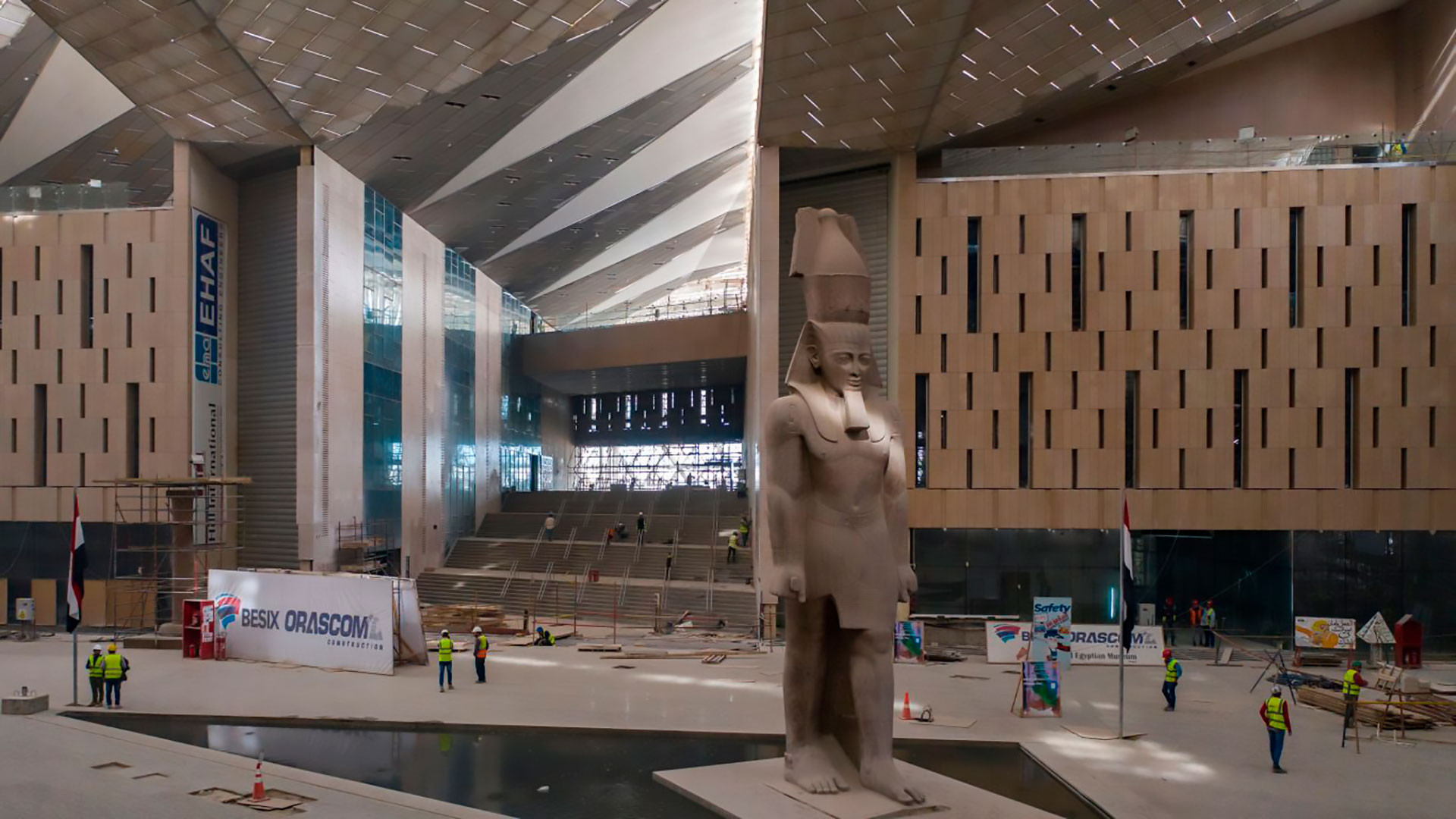About 2 km from the site of the pyramids of Giza in Egypt, construction is nearing completion on a building whose inauguration will undoubtedly be a global event, both in terms of architecture and in terms of culture and society. It is the Grand Egyptian Museum (GME), which is already considered to be “the largest museum in the world dedicated to a civilisation”, in this case that of Ancient Egypt, with more than three millennia of history. The project began with a presidential decree in 1992, but it was in 2003 that the New York and Dublin-based architectural firm Heneghan Peng won the competition organised by the Egyptian government for its design. Heneghan Peng then worked with a team of more than 300 professionals from 13 firms in 6 countries. Among these companies, the studio worked with Buro Happold Engineering and Arup for the engineering, with West 8 for the landscaping and the master plan for the entire site, whilst the German studio Atelier Brueckner was in charge of the partial designs for the galleries dedicated to the treasures of Tutankhamun, the Grand Staircase, the Atrium of the square and the Children’s Museum.
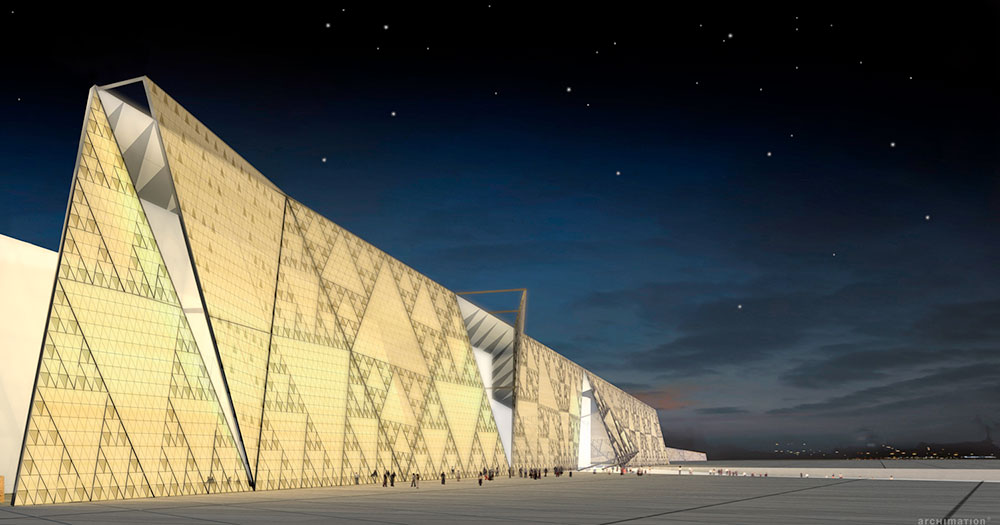
But let’s see what the GME’s architectural project is all about: designed as a tribute to the pyramids, whose basic forms it replicates from the minor details to their overall shape, the overall feeling of the building is that of a pyramid lying on its side. And its orientation is not left to chance, its vanishing lines imaginatively extending to point to each of the pyramids of Giza. Moreover, the great museum sits on a 500,000 m2 site, or almost 10 times the area of the base of the Cheops pyramid, with a 50-metre drop between the first desert plateau separating the pyramids of Cairo at the top and the Nile valley below. Well, the museum’s design makes use of this topography so that visitors ascend as their visit progresses to the highest point, where they are rewarded with unique views of the pyramids. In terms of its parameters, the GME will house 24,000 m² of permanent exhibition galleries, in addition to the aforementioned Children’s Museum, and conference facilities, educational areas, a conservation centre and extensive gardens in and around the museum.
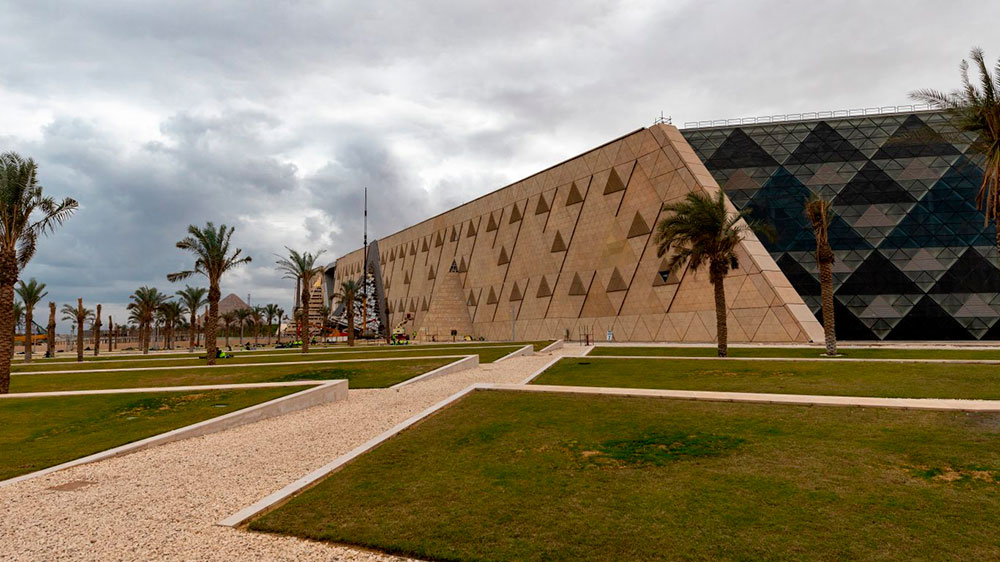
In terms of financing, the initial $550 million anticipated for its construction was reportedly doubled over the course of its development. Whilst the Egyptian Ministry of Antiquities contributed one-fifth, the rest of the capital was provided by the Government of Japan, with a loan from its International Cooperation Agency, along with other local and international private contributions. However, Japan has also supported the establishment of the museum’s preservation and conservation centre with staff and technical assistance.
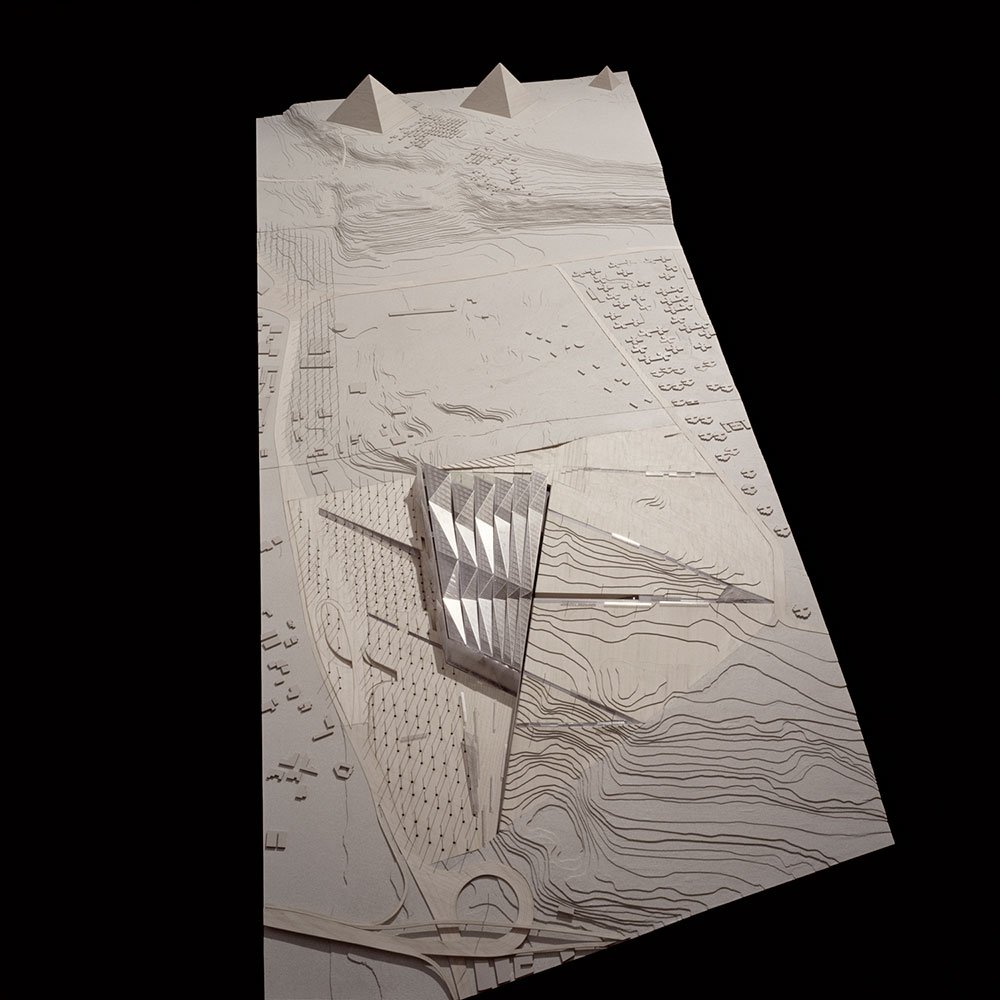
Now all that remains is to wait for the opening day, almost 30 years after the pharaonic project was announced in 1992. Among the obstacles that have delayed its construction are the Arab Spring of 2011 and more recently the COVID-19 pandemic. Finally, on 7 April, Osama Bishai, CEO of Orascom, the main contractor for the project, told Construction Week that “we are currently 98% complete in terms of construction“, adding, “I think we will be finished sometime this summer, but to do the grand opening of a museum like this, [the authorities] need to invite people well in advance“. So, although there is no official announcement, the GME, the great modern temple to Egyptology, is expected to open in the second half of this year or early 2022.
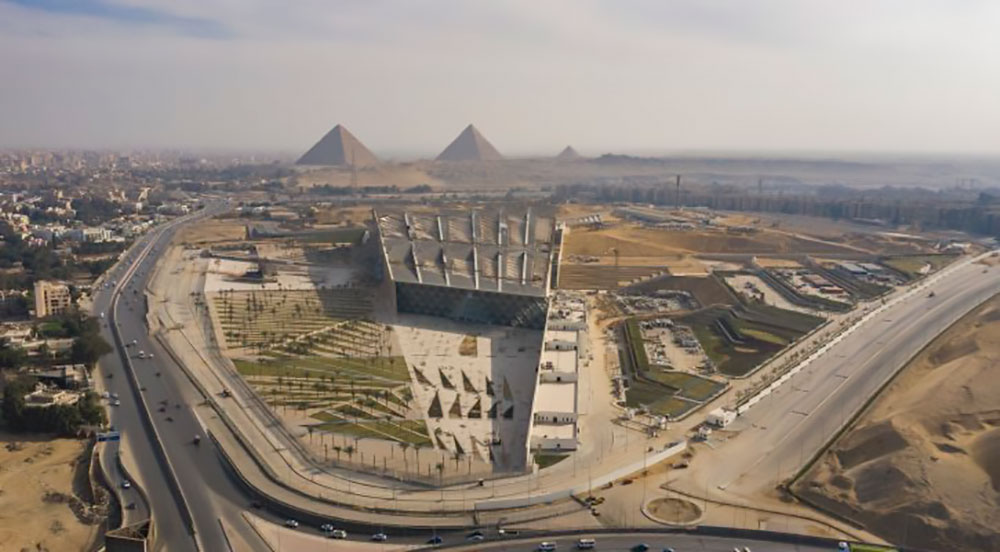
Sources: Heneghan Peng, ArchDaily, Construction Week, Arab News.
Images: Orascom Construction, Heneghan Peng.


